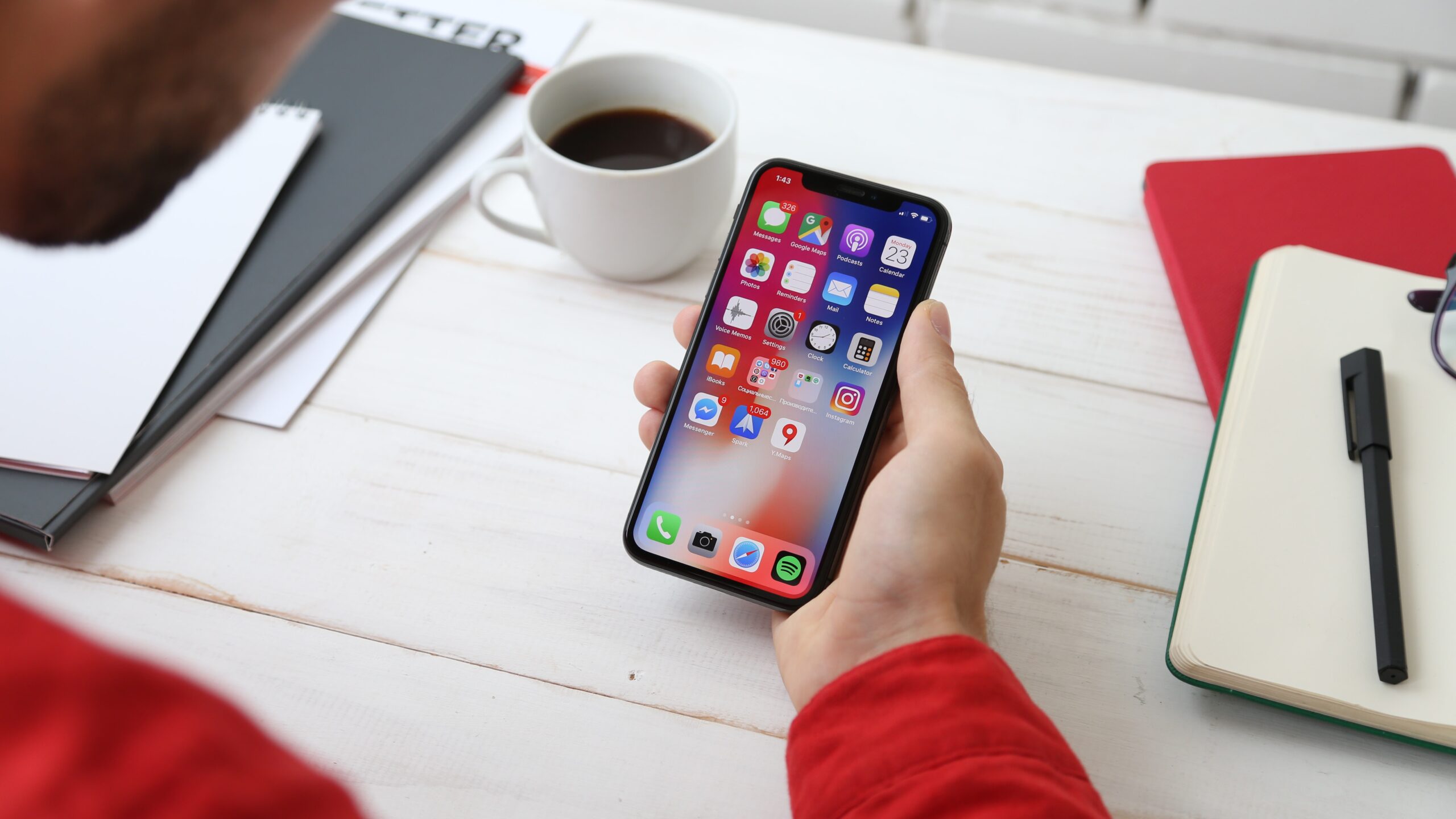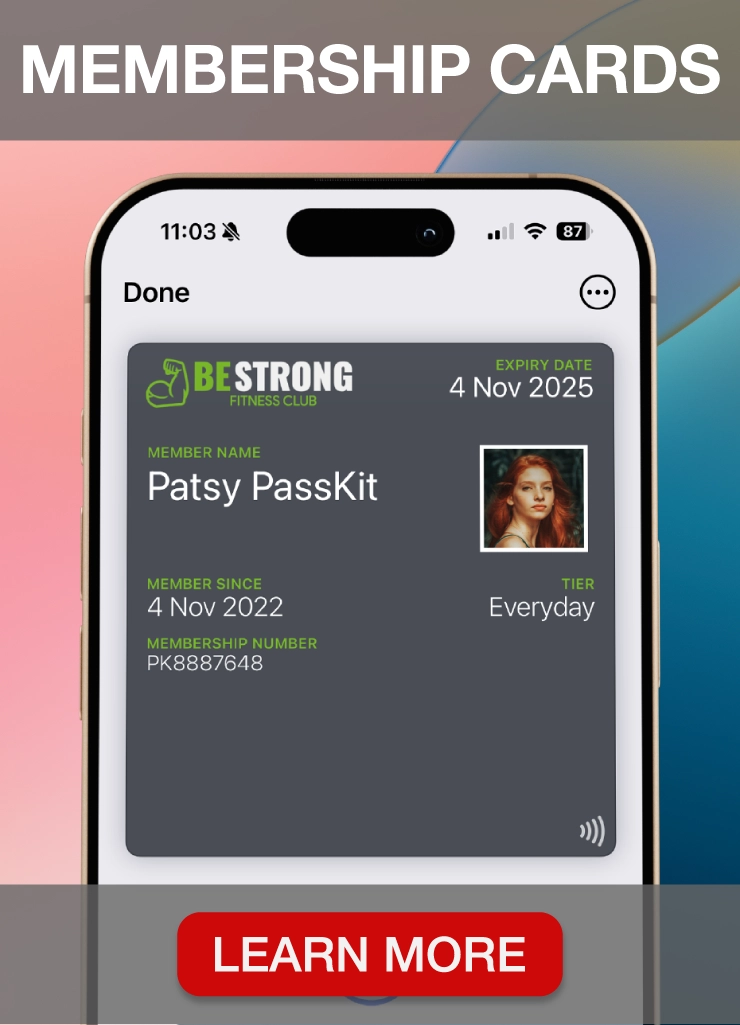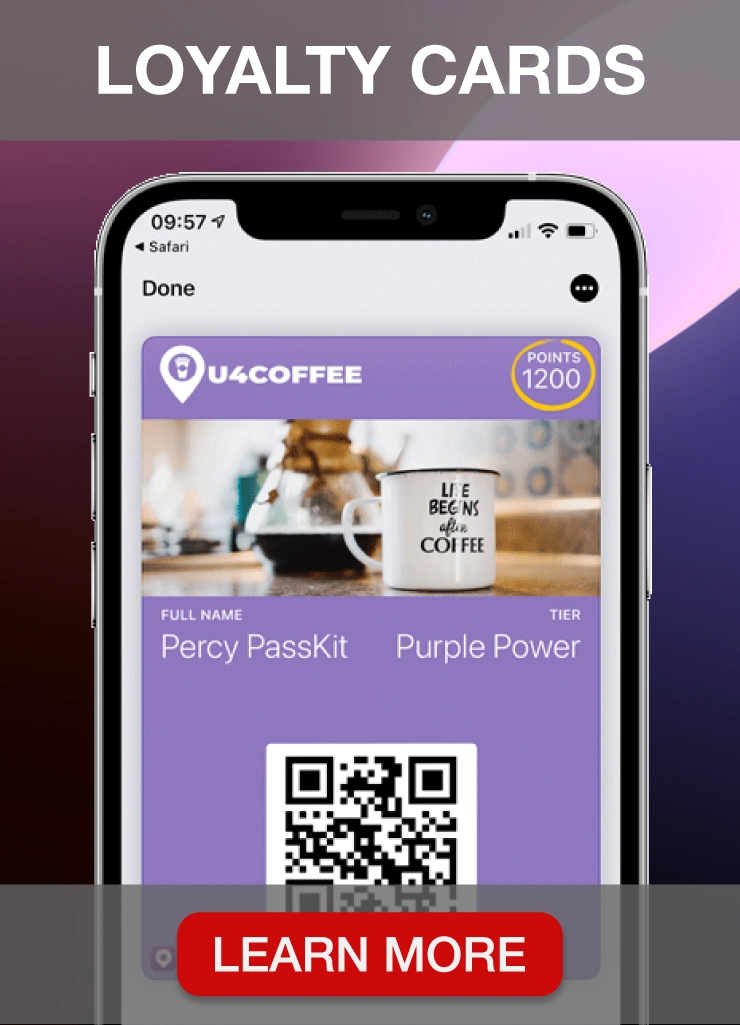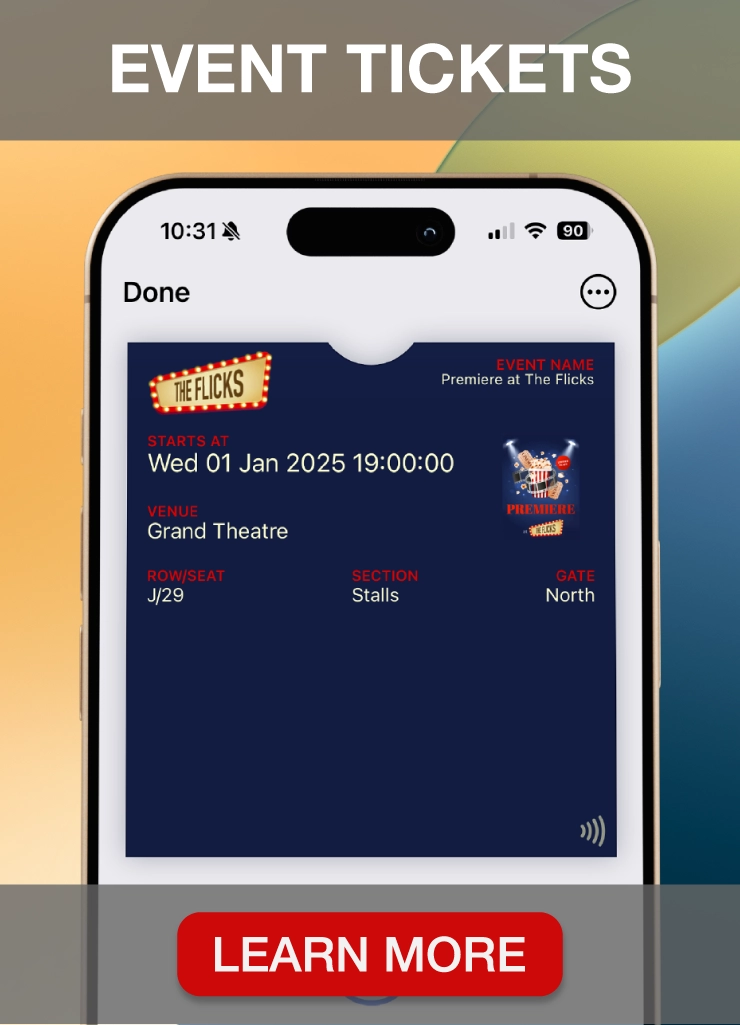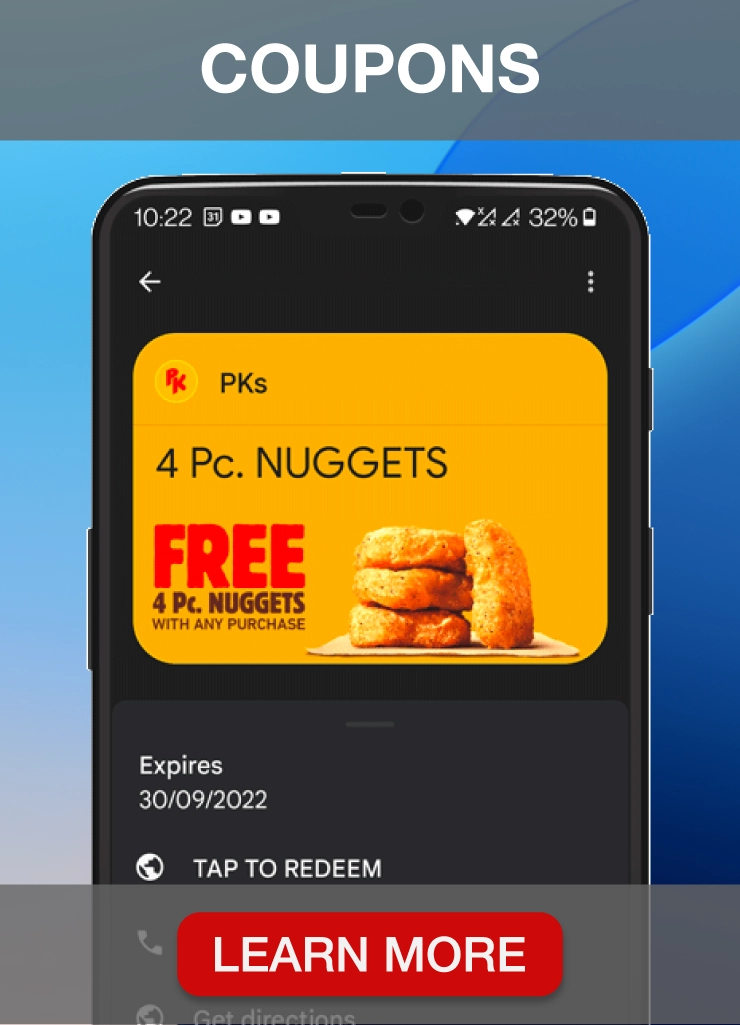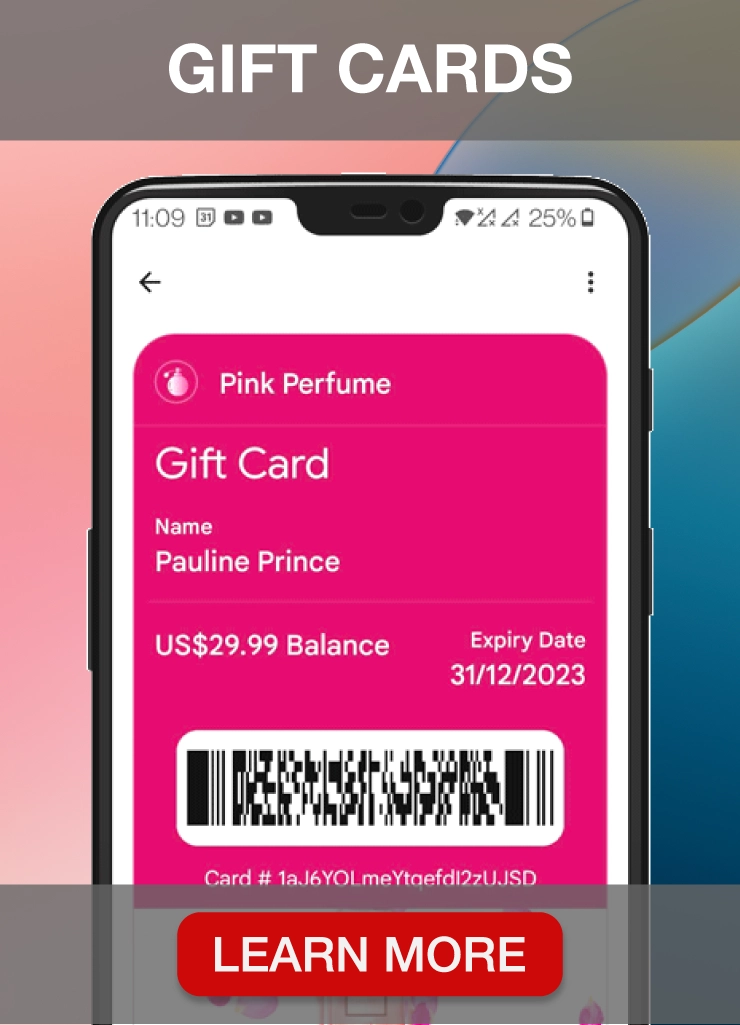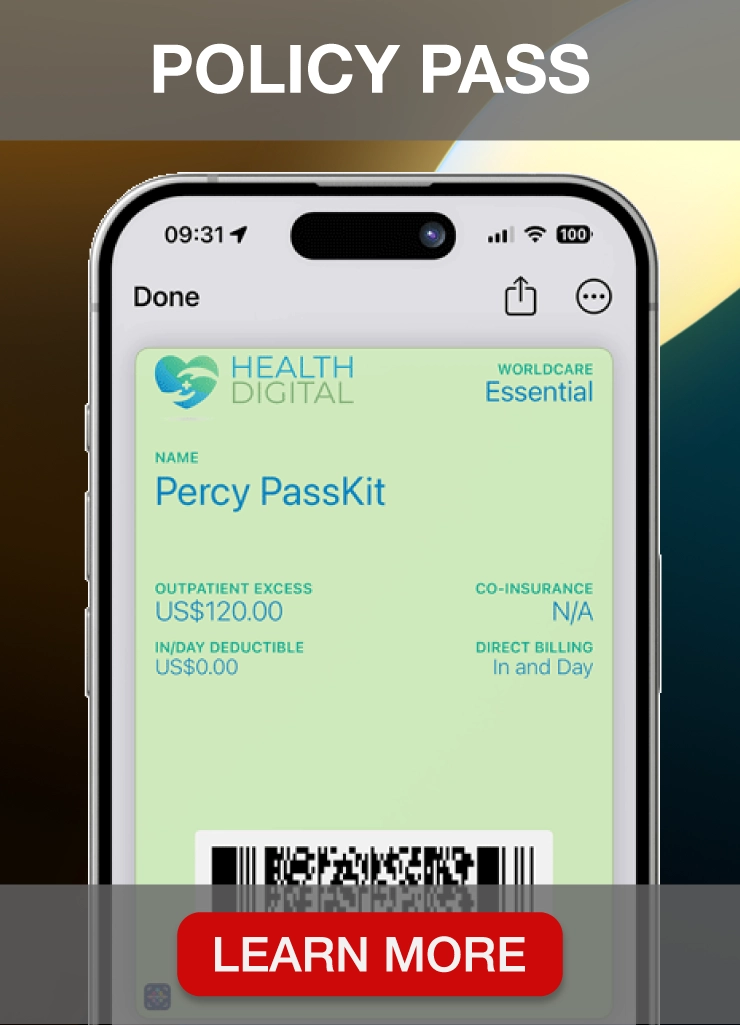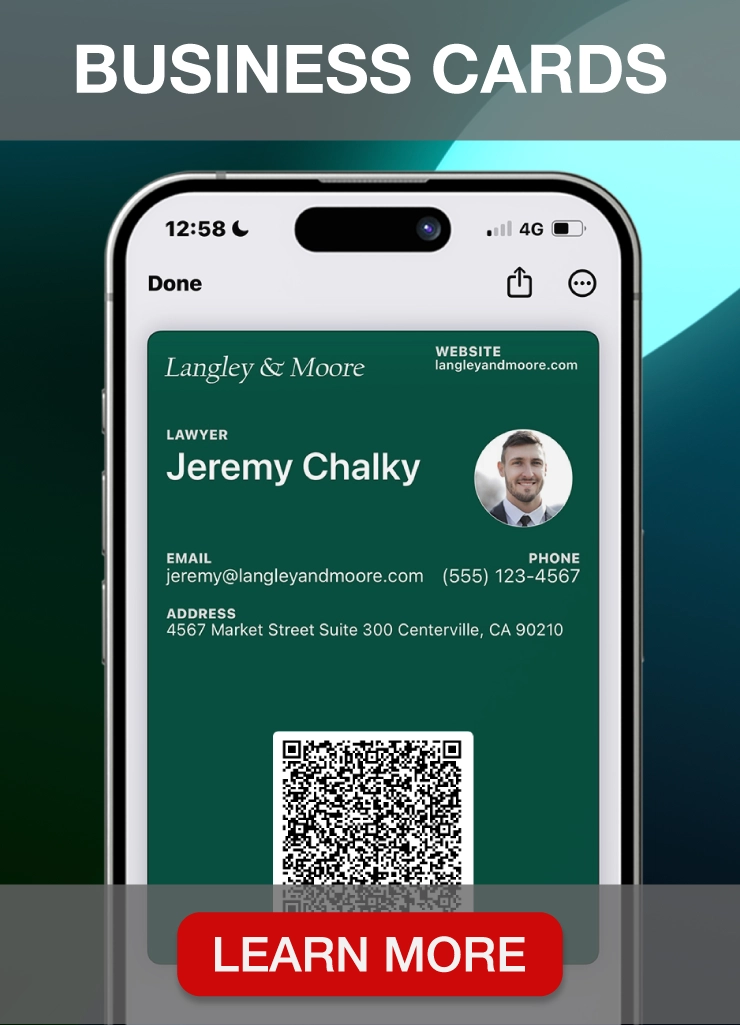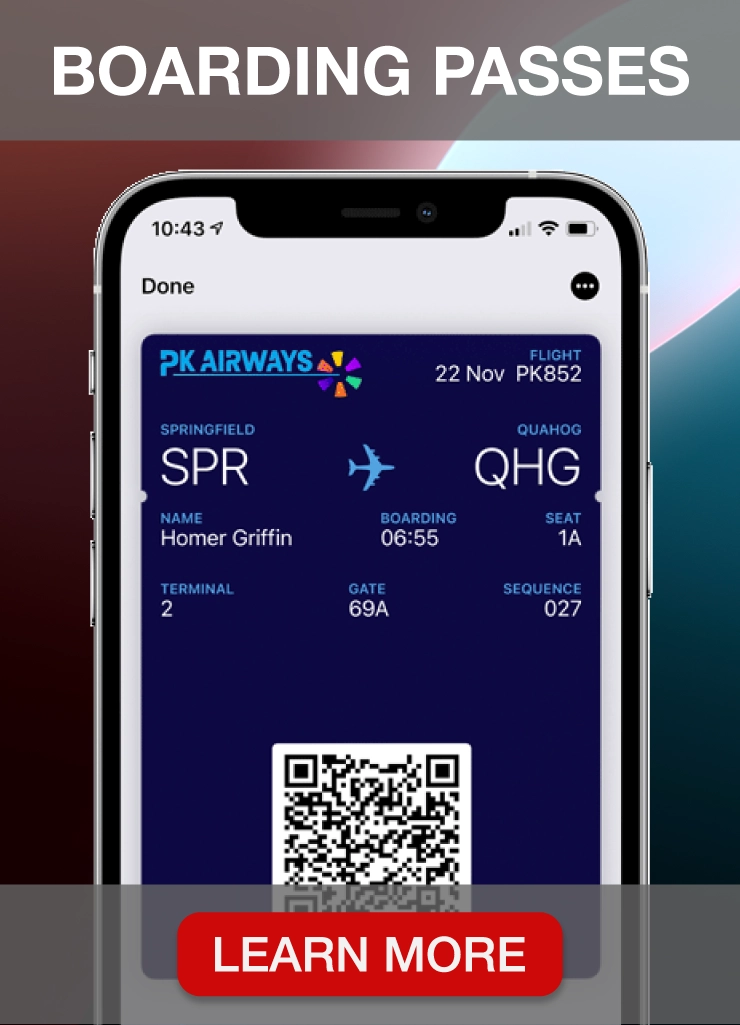It won’t come as a surprise to learn that the app market is highly competitive. Statista estimates that over five million apps are available across Google Play and the Apple App Store. That’s a massive number of user options, making it tricky for developers to stand out from the crowd.
Image source: Wolfmatrix
If you want to differentiate from the competition with your app, you need to find ways to make it more appealing to potential users. Even though your app might be excellent, users may not recognize this. You’ll need to find a way to communicate the benefits of your app to your customers.
Businesses start with custom app development to find the best method to host their loyalty program, but there are more cost-effective and less time-consuming methods for launching such programs.
PassKit, our digital loyalty platform, allows you to create digital loyalty cards, membership cards, or coupons that customers can install on their mobile wallets – Apple Wallet or Google Pay. What’s best, you can promote and distribute your digital membership cards or coupons on multiple marketing channels and track the loyalty program data. Sounds interesting? Sign up for a 45-day free trial to check how effective it is.
Many businesses see custom mobile app development as an obvious solution for increasing customer engagement, winning customer loyalty, and boosting retention. Since it is such a popular approach, they jump into the app development process without considering all the downsides of this strategy first.
In this article, we will take a closer look at the drawbacks of the app-building software and explain how you can start your loyalty program with PassKit. Let’s first explain the custom app building.
What is custom app building?
Image source: Freepik
Custom development refers to creating a mobile app, website, or another type of web-based application from scratch. Custom app building can involve developing the entire mobile application from start to finish or customizing an existing mobile application or website to create a new version that reflects your company’s specific needs.
Custom app development and loyalty programs
Image source: Factory.dev
Custom app development might seem perfect for today’s business needs. The COVID-19 pandemic strongly influenced customer shopping behavior, forced them to try new shopping channels, and start with contactless shopping. The pandemic made the focus on digital solutions even stronger.
While more and more companies see having a well-optimized loyalty program as a necessary ingredient of their business strategy, plastic loyalty cards are becoming a thing of the past. Businesses are looking for ways of replacing plastic cards, and having a custom-based app for a loyalty program seems to be the first solution that comes to their minds.
This approach has several benefits. It allows gathering of customer data, which empowers companies to create personalized experiences. Staying in touch with customers becomes easier: they can get notifications about available rewards or track loyalty points they have collected directly in the app.
Rather than ordering items through the app and paying for them using their credit cards, customers can now order items remotely and pay using their app accounts. In addition, they can earn points for in-app purchases.
Despite all the advantages, building mobile apps has many disadvantages. Let’s discuss some of them.
13 custom app building issues that might pop up
Image source: Pinterest
Building an app is not as easy as it seems. It can be frustrating, as Apple App Store and Google Play Store reviews can make or break your success. When you build custom apps, you can encounter many challenges. Let’s discuss some of them.
1. Lack of a business strategy
Before designing your app, you must define your target audience and address their pain points. If you don’t have a precise strategy at the beginning, everything else will be more challenging.
You will not be able to build an app that attracts customers unless you have a clear vision. It will take longer to build your app because so many building blocks need to fit together perfectly.
2. Lack of a skilled in-house team
One of the most common reasons businesses avoid developing apps is that they don’t have an in-house team. Building an app from scratch is beyond their capacity or expertise, making investing time and money risky.
Even for start-ups, some app development skills are necessary for critical components such as user interface design, coding, and testing. It can be costly, especially if you lack an experienced team to handle everything from development to deployment.
3. There is no difference between your and competitors’ apps
Many applications on the market offer essentially the same features. When your custom app is ready, you might realize there is no difference between your and competitors’ apps.
Your competitors are fighting for the same prize as you, so there can only be one winner in gaining customer loyalty. Working hard to improve on what makes you different from your competitors can consume time and money.
4. The market is oversaturated
Too many similar apps compete for users’ attention, making it difficult for new companies to get off the ground. If you create your own mobile app, it may be challenging to convince customers to install and use it. Customers are more likely to use an app they already know and trust than to try a new one.
5. Diversion of resources from your core business
Custom mobile app development is a time-consuming and expensive process. When you focus all of your attention on creating an app, you may neglect your day-to-day operations. Your company’s resources will be spread too thin, and you won’t be able to fulfill all the tasks needed to maintain a healthy business.
6. High development costs
Image source: Mobiversal
To create a successful app that people want to use and engage with over time, you need to consider different development stages and the cost of each.
For instance, engaging with potential users during the ideation phase is a cost-effective way to validate your ideas. You can conduct user research and gather feedback from potential users to shape your ideas into a product that people want to use.
On the other hand, if you want to improve the functionality of your app and add several new features to make it more user-friendly, the app development costs will be higher, reducing your budget.
7. There’s no guarantee of ROI
Custom apps are a great way to stand out from the crowd. They are also an excellent way to spend money on development that might not be worth it. The most significant risk is that there’s no guarantee of ROI.
The cost of custom app development could be higher than expected, or the product could flop. It’s also possible for bugs to make it into the final version, causing users a bad experience.
Another risk is that your app won’t be well-received by users. Even if you have a good app idea, people may not be interested in your offering. It can make it hard to get traction and lead to low sales overall.
8. Native apps require constant updating and maintenance
A growing trend in the mobile app world is the rise of native apps. Native apps are developed specifically for a particular platform, typically Android or iOS, but require constant updating and maintenance.
Moreover, they can be costly: since native apps are built specifically for a particular device, it often costs more to develop them than web apps that work across various devices.
9. Not all customers are on Android or iOS
Many companies assume that everyone using their product is on Android or iOS, which is not true. If you are in a market where most people use Android devices, you might assume that all your customers use Android too.
However, there may still be a significant number of people who do not use Android. There are many other platforms out there, including Windows Phone.
10. Consumers expect high-quality apps nowadays
Image source: Freepik
Today, consumers demand high-quality apps. They want to complete tasks efficiently and quickly without figuring out how to do so. They want apps that load quickly, respond promptly to their inputs, and expect engaging and fun apps to use.
So to withstand competition, you’ll have to create a well-designed, professional app, and that’s not an easy task.
11. Lack of user engagement, retention, and growth
Looking around the web today, you’ll find a plentitude of consumer apps. Most of these apps are available on both iOS and Android. They include social apps like Facebook and Twitter, and news and weather apps like Weather Channel and AccuWeather.
Besides these popular apps, many other consumer apps help with tasks like grocery shopping, banking, and travel booking.
If you create your iOS or Android app, it will have to be competitive enough to fight for user attention with all the abovementioned apps. If you fail the task of building customer engagement with your app, it won’t fulfill its purpose of retaining customers and helping your company grow.
12. You can’t implement all features in a mobile app
A mobile app is a web app your customers can use on smartphones and tablets. The app’s functionality is limited to what’s possible on a mobile device.
The most important thing to remember when creating a mobile app is that you can’t achieve everything you want. There are trade-offs involved in designing and building an app, so planning and considering what is most important to you before starting is essential.
There are two main areas where mobile apps tend to fall short:
- Features: It’s possible to create an app that does everything from sending text messages to controlling your smart home devices, but these features will likely be limited.
- Size: Mobile apps are often quite large, so you’ll need to ensure your customer devices can run them before development.
13. Finding quality mobile app developers is hard
Many factors play a role in finding a good mobile app developer. High-quality developers have experience and expertise. They have been in the industry for a while and should have developed apps for other businesses.
They should be able to create apps optimized for different devices and operating systems. Most importantly, they should be able to work well with clients and maintain communication throughout the project.
Professional app makers are usually very busy, booked for several months ahead, so it won’t work in your favor if you want to start your loyalty program fast.
If so many traps are waiting for you on the track of custom mobile app development, why not try a more secure way? With PassKit, you can avoid all the issues and considerably shorten the time of creating your loyalty program. You just need to create your account and start a 45-day free trial.
Let’s see how your business benefits from using PassKit compared to custom app building, app builders, low code platforms, and other app makers.
10 reasons to start using PassKit instead of developing custom apps
PassKit is a customer loyalty software that allows you to create loyalty programs quickly. All you have to do is create your account, log in to our service, choose a loyalty card template, and modify it according to your needs. The process is very simple, and you can finish it in a few minutes.
You can use our visual editor to add information to your digital loyalty cards, membership cards, or coupons and save your design. After that, you are ready to distribute the loyalty cards among your customers on multiple marketing channels, and we also made it very simple. You can even track your redemption rates and evaluate your loyalty program performance with our advanced analytics.
Your customers can store their digital loyalty cards in their Google Pay or Apple Wallet, using services they already know and trust. Since these mobile wallets are built-in on their smartphones, which they always carry with themselves wherever they go, there is no need to develop a custom app for your business.
The benefits of using PassKit over developing your own app are plentiful, so let’s discuss some of them.
1. Cost-effectiveness
Using PassKit will save you a lot of money since it integrates seamlessly with Google Pay and Apple Wallet. You don’t need to build an app or host a server to design your loyalty program and update your digital passes. All the benefits of PassKit come at a small monthly fee.
2. Return of investment
PassKit increases your chances of getting a higher ROI without investing large sums of money in advance. Thanks to our platform, you can expect a monetary return, save resources, and quickly see how your business grows.
3. Multiple channel distribution
When you create your loyalty program with PassKit, you can use several channels to distribute loyalty cards among your customers.
Your customers can install digital loyalty cards to their mobile wallets by following the URL or by scanning a QR code. You can provide them with the code and the link via multiple channels like SMS, email, your company website, your app, social media sites, and similar.
Moreover, if customers use Google Pay or Apple Wallet to pay at your POS, you can set push notifications that will encourage new users to install the loyalty card.
And the possibilities are not limited to digital sources. You can also print the QR code and the URL on pop marketing materials like posters, floor graphics, danglers, and shelf talkers. You can even use the receipts customers get with every purchase to print the QR code, so users can scan it and seamlessly add the loyalty card to their mobile wallet.
4. No need for coding skills
As we mentioned before, hiring app makers is an expensive solution. If your company has a smaller budget, you will have difficulty finding the funds to hire programmers and designers.
With PassKit, you can create and launch a loyalty program in a few minutes without knowing programming languages. You won’t have to write a single line of code or design your solution. All you have to do is take one of our loyalty card templates and use customization options to match it to your needs.
5. Integration with mobile wallets
When you use the PassKit platform, you don’t have to convince your customers to download just another app on their phones. They are already familiar with Apple Wallet and Google Pay, so instead of offering them another app, you invite them to add a digital loyalty card to their mobile wallet. They can do it with just a single tap.
6. No development costs
If you decide to go for custom app development, the cost can range from a few hundred dollars to tens or even hundreds of thousands. It will depend on how complicated an app is, how long it takes to build it and how much testing it requires.
With PassKit, you can avoid all these costs. You just plug in your business to a ready-made platform, and since the solution is tried and tested, you can start using it immediately.
Apart from the subscription fee, there are no expenses. You don’t need to buy additional expensive hardware or software because PassKit can work with your existing solution. So, for example, there’s no need to replace your POS terminals.
7. Boosting user engagement
Research revealed that an average person has around 80 apps installed on their smartphone but doesn’t use 62% of them. It shows that convincing users to download an app is hard, but encouraging them to use it is even more challenging.
Since your customers are already familiar with all the features of Apple Wallet and Google Pay and use them daily, you don’t have to persuade them anything. When you start using the PassKit service, your customers will have access to their digital loyalty cards stored in their preferred wallet app. They can use it with a few taps whenever they visit your store, coffee shop, gym, restaurant, or hotel.
Moreover, our platform has built-in mechanisms designed to increase customer engagement. For instance, when customers come close to your store, they can receive location-based notifications, reminding them to step in and collect more points or redeem their rewards. You can also send them birthday wishes with a coupon code or notifications about special deals.
8. Retention and growth
When you use our ready-made solution, you can avoid all the complexities of custom app development. Just think about the rewards or tiers you will offer your clients, and you are ready to go. Enticing your customers with rewards and special deals will help you increase customer retention, leading to your business growth.
9. Increased trust
Using PassKit will build trust between you and your customers. You show that you are reliable because you offer services that rely on trustworthy digital wallets – Apple Wallet and Google Pay.
10. Ability to track redemption rates
When your loyalty program is already functioning, PassKit allows you to track redemption rates and other statistics to learn how successful the program is. You can see the number of enrolled members, the total number of digital cards installed in customers’ mobile wallets, and program performance by day, month, or year.
As you can see, using PassKit is risk-free and allows you to skip the laborious and costly process of custom mobile app development. When you use our platform, you can provide your customers with a ready-made loyalty program even today.
Custom app building: The bottom line
While custom app development might seem like a perfect solution when you want to increase customer engagement and retention, you should consider if it’s worth your time and effort before you start.
Without a clear business strategy, hiring skilled app makers, huge funds, and an incredible app idea, you won’t manage to create a product that consumers will love and use on an everyday basis.
Having the app doesn’t guarantee success. When it’s ready, you will have to bear further expenses connected with the marketing and distribution of the app. And even if you can convince customers to download the app, how will you engage them?
Your customers need a solution that allows collecting points in the digital form, checking the available rewards, and using the points in-store in real-time. But you can achieve this without creating new iOS or Android apps.
When you join PassKit, you can design a loyalty program in only a few minutes, distribute it among your customers via multiple channels, and watch how customer engagement with your business grows. So what are you waiting for? Start your 45-day free trial now.
